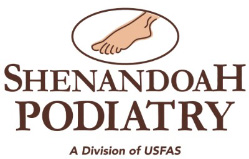 One of the more common sports injuries is called turf toe. This describes the hyperextension of the ligament beneath your big toe. It is when you sprain the metatarsophalangeal (MTP) joint, the main joint on your big toe. This is the hinge that lets you move your big toe up and down. Turf toe stretches or tears tendons, ligaments, and other soft tissues. Experienced podiatrists can help treat it and get you back in the game.
One of the more common sports injuries is called turf toe. This describes the hyperextension of the ligament beneath your big toe. It is when you sprain the metatarsophalangeal (MTP) joint, the main joint on your big toe. This is the hinge that lets you move your big toe up and down. Turf toe stretches or tears tendons, ligaments, and other soft tissues. Experienced podiatrists can help treat it and get you back in the game.
Common Causes of Turf Toe in Virginia
As the term implies, turf toe most commonly affects athletes who play on artificial turf. Football players are especially prone. Sudden and sharp movements, like quick turns and jukes, can lead to injury. Artificial turf is a harder surface than natural grass. People who play other sports in Virginia also suffer from turf toe. They don’t have to play on artificial turf. It can happen on any surface.
Examples of sports and activities include ballet, gymnastics, basketball, wrestling, and soccer. These often involve quick or sharp movements on hard surfaces. Athletes may also not be wearing sufficiently supportive shoes. Softer, lighter, more flexible shoes on a hard surface increase the risk of turf toe.
The injury can be a sudden trauma or it can develop over time. What happens is the bent toe is jammed into a hard surface. This can come from pushing off while sprinting or jumping. Certain dance and ballet moves can put the toe in this position too. Jamming the toe bends the big toe joint upward too much, hyperextending the ligament underneath. Also called a sprain, this stretches or tears the ligament, pushing it beyond its natural range of motion.
Telltale Turf Toe Symptoms
To diagnose turf toe, your Roanoke podiatrist will start with a physical exam. We’ll check for tenderness, range of motion, and general mobility. Diagnosis may include medical imaging like X-rays too. Patient interviews can reveal causes and guide the treatment plan.
Symptoms of turf toe can range in severity. Grade 1 turf toe has stretched soft tissue. Grade 2 has complex partial tears. And finally, grade 3 turf toe is characterized by a complete soft tissue tear. The MTP joint may also be dislocated. Symptoms can be sudden or they can worsen over time.
The main symptoms of turf toe are:
- Joint pain can be intermittent or constant. It can also range in intensity. You may only feel pain in certain positions or during certain movements.
- Swelling can occur at the base of the big toe. You may also see bruising all around the affected area, going up to the top of the foot.
- Mobility can be impaired because of turf toe. Your big toe joint may lack its usual range of motion. You may also have a hard time pushing off.
- A loose joint, or the sensation of an unstable joint, is another turf toe symptom. It can feel like the MTP joint pops out of place or is unusually stiff.
Without proper treatment from an experienced Virginia podiatrist, turf toe symptoms can intensify. Worse yet, they can lead to even more pain and injury.
Available Turf Toe Treatments
Like other common sports injuries, treating turf toe depends on the individual. The injury can go from mild to severe. Your podiatrist may suggest any or all of these turf toe treatments:
- Rest. Some sprained toes can heal on their own if you give them the chance. Take it easy and avoid undue exertion. Don’t put too much weight on your foot.
- Ice. Reduce inflammation by applying ice or a cold compress to the affected area. You can do this for about 20 minutes at a time.
- Elevation. Elevate your foot above your heart every few hours. This can reduce swelling.
- Pain relief. Over-the-counter and prescription medication can reduce pain and inflammation. Nonsteroidal anti-inflammatory drugs (NSAIDs) are a common choice.
- Stabilization. Your podiatrist may suggest taping your big toe to your smaller toes. This stabilizes the joint, restricts motion, and assists in healthy healing.
- Compression bandages. This is another technique for swelling reduction.
- Orthotics. Custom shoe inserts provide added support and stability while moving.
- Surgery. Usually, only severe turf toe injuries require invasive surgery. Fractures or joint damage may justify surgery.
Why You Need to See a Virginia Podiatrist
The team at Shenandoah Podiatry has a long history of treating feet for years. In addition to turf toe, the team has helped many patients overcome a variety of other sports injuries. Even if you’re only experienced mild discomfort, it’s important to see a professional. We can help prevent the injury from getting worse. We can also help it heal more quickly and in the right way!
If you have pain, swelling, or bruising, a podiatrist can get at the root of the problem and develop a custom treatment plan. We can walk you through the whole process, including post-treatment support. The right advice can prevent future injury and reduce the chances of turf toe from happening again.
